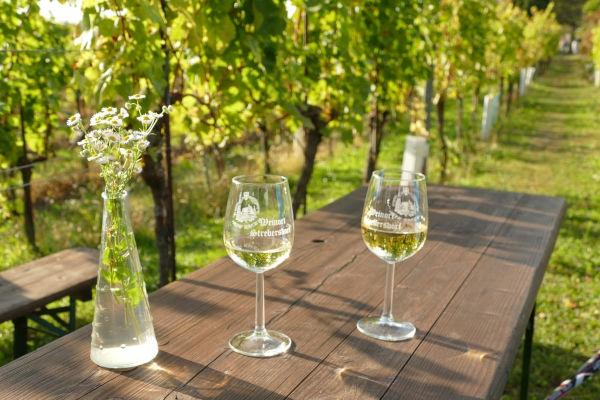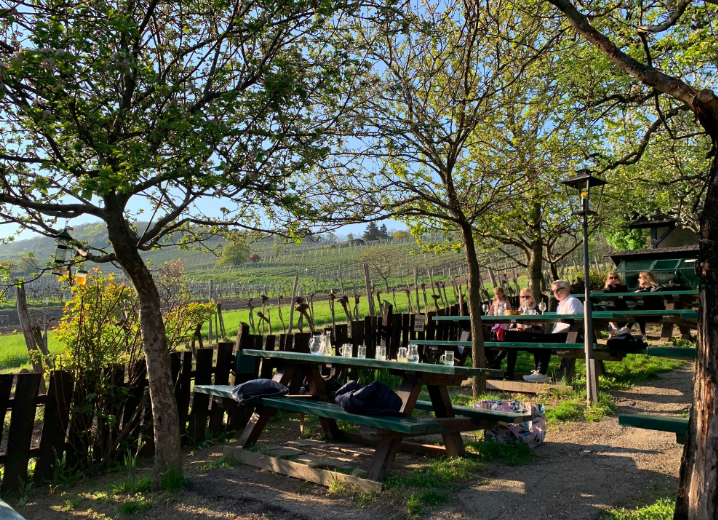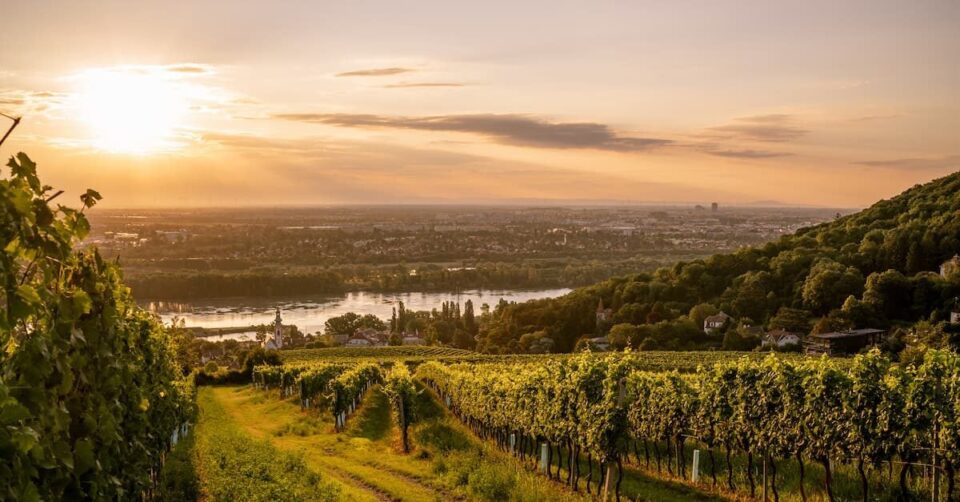My buddy Gabriela exclaims, “You can see the whole city; it’s that clear.” We’ve made our way to the heart of a vineyard high above Vienna. The Danube meanders through the heart of Austria’s capital city below us.
In the distance, I can make out the Prater, home to Vienna’s famous Giant Ferris Wheel, and up close, I can see the Gothic spires of St. Stephen’s Cathedral.
Despite being a familiar scene, it still manages to put a grin on my face. As an exchange student, I fell in love with Vienna.
When I first moved here, I had no appreciation for the arts. But Vienna worked her magic, and by the time I left, I enjoyed all three.
I try to get back to Vienna any chance I get now, but summer is definitely my favourite time to go. Patios in the historic district are bustling with diners, and the vibrant blooms of the city’s palace gardens are a sight to behold.
The best news is that the vineyards that stretch from the outskirts of the Vienna Woods to the Danube’s banks have returned to full bloom.

VIENNA’S LOVE AFFAIR WITH WINE
More than 1,700 acres are devoted to vineyards inside Vienna’s city borders, making it the only major world capital with such a substantial wine growing area.
10 REASONS TO VISIT VIENNA
In the hills outside of Vienna, specifically the Nussberg, Kahlenberg, and Bisamberg, there are more than 190 winemakers. One of the symbols of the city, Schönbrunn Palace, even has its own vines.
Vienna has a long and storied history with wine. Wine gardens and pubs in Vienna are just as popular as beer gardens are in Germany. The popular local Heurige practise dates back to 1784, when Hapsburg Emperor Josef II issued an order allowing winemakers to sell their own products.
The Heurige in Vienna are wine taverns where vintners serve their own creations with regional specialties.
Many of these establishments have garden or courtyard seating where you can enjoy a glass of wine and inexpensive dishes like dark bread with Liptaurer (spicy cheese) or other creamy spreads, potato, cucumber, or carrot salads, sauerkraut, and many types of roast meats while taking in the renowned Gemütlichkeit (cosiness) of the area.
The only time a heurge is open is when they have wine to sell. The Heurige is open when the winemakers hang a bundle of pine twigs over the door and announce it with the word Ausg’steckt.

HIKING IN THE VINEYARDS
Hiking through the vineyards of Vienna is a popular pastime, and many hikers complete their journey at a Heurige. On the annual Vienna Wine Hiking Day in the autumn, hikers can choose from three predetermined routes through the region’s vineyards. Winemakers and chefs along the route provide free samples.
HOW TO REACH THE VIENNA VINEYARDS
Vienna’s contemporary and user-friendly public transit system makes it simple to see the city’s many vineyards and the Vienna Woods. When I go, I want to stay in the Old Town.
Taking the 38A bus from the charming Grand Ferdinand Hotel on the Ringstrasse to Grinzing only took me 40 minutes.
There, Gabriela and I began our walk along the Grinzinger-Steigs, which is 3.4 miles long. The trail between the two old wine villages of Grinzing and Nussdorf winds from the city up into the vineyard-covered hills. We walked across a vineyard where the grapes were all named after well-known people, from Christoph Waltz to the Dalai Lama.
We followed the path as it wound through the thick vegetation of the Vienna Woods. We saw hikers and bikers on the many routes that weave through the hills. The path occasionally veered through the trees before descending neatly arranged vines.
VIENNESE WINES
Grüner Veltliner is the most widely produced white wine in Vienna. Gemischter Satz, a wine blended from several different types of grapes, is another regional favourite.
Grape growers can construct their own one-of-a-kind Gemischter Satz by planting and harvesting more than 20 distinct grape kinds in their vineyard. There’s a lot of dispute among my Vienna-based pals, but many of them enjoy a G’spritzer, which is made by mixing Gemischter Satz with soda water.
Wine bars in the area often set up temporary outside eating and drinking areas in the vineyards when the weather permits.
On our walk, we pass many that seem delicious: the Wieninger am Nussberg, the Mayer am Nussberg, and the Heuriger Sirbu. But we press on, enjoying the pleasant weather and clean air. However, the sun does begin to set.
We pause for one last panorama of Vienna before descending through vineyards and a tiny cemetery to reach Nussdorf, a former village that is now a suburb of the Austrian capital.
We visit Heuriger Kierlinger, a winegrower’s pub that has been in operation on this site since 1787 and is still owned and operated by the same family.
Ancient linden and chestnut trees provide welcome shade in the tavern’s outside courtyard and guest garden throughout the warm summer months. As night falls, however, we must go indoors to the warm setting provided by the basic wooden tables reminiscent of the 19th century.
I can’t help but grin when we order wine and then choose some of my favourite traditional Austrian foods. I’m glad to be back in Vienna, where I can enjoy the company of old friends, the city’s delicious cuisine, and stimulating conversation.

